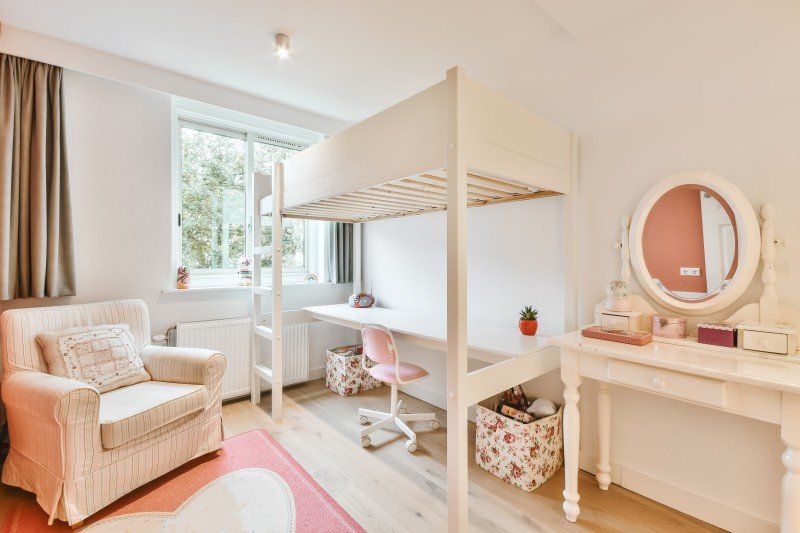10 Quick Tips To Kids Bunk Bed
The Ultimate Guide to Kids Bunk Beds: Maximizing Space and Fun
With the rise of vertical living and smaller sized spaces, the appeal of bunk beds has soared amongst households. Bunk beds not only offer a useful sleeping option, particularly in shared rooms, but they likewise bring an element of enjoyable into a kid's life. This thorough guide digs into the features, benefits, and factors to consider of kids' bunk beds, making it simpler for parents to pick the right bed for their little ones.
Functions of Kids Bunk Beds
Bunk beds are versatile pieces of furniture that serve more than a single function. Here are some crucial functions to think about:
Feature
Description
Material
Bunk beds can be built from wood, metal, or a mix of both, using differing levels of sturdiness and style choices.
Safety Features
Many bunk beds come equipped with guardrails, protected ladders, and capped supports for safety, particularly essential for children.
Style Variety
Choices range from classic styles to contemporary styles, guaranteeing a match for any room decoration.
Space-Efficiency
Bunk beds utilize vertical space, making them perfect for smaller rooms.
Convertible Options
Some designs can be converted into 2 separate beds, providing flexibility as kids grow.
Storage Solutions
Some bunk beds come with integrated storage drawers or racks, assisting to keep the room arranged.
Advantages of Kids Bunk Beds
Buying a bunk bed includes a number of advantages:
- Space Saving: Bunk beds make the most of flooring space, enabling more backyard or storage solutions.
- Fun Factor: With a bunk bed, kids have a place that promotes creativity and companionship throughout pajama parties or playdates.
- Cost-Effective: Instead of acquiring two separate beds, a bunk bed can accommodate 2 kids at as soon as, saving cash in the long run.
- Adaptability: Many bunk beds can be disassembled or converted into twin beds, making them a long-term financial investment as children's needs change.
- Social Interaction: Bunk beds motivate household bonding and friendships, supplying an inviting space for children to share stories and laughter.
Factors to consider When Choosing a Kids Bunk Bed
When selecting the best bunk bed for a kid, parents need to take into consideration numerous elements:
- Safety Standards: Ensure that the bunk bed adhere to security guidelines and features essential security functions.
- Age Appropriateness: Different designs deal with different age. For instance, conventional bunk beds may not be ideal for younger kids.
- Space Dimensions: Measure the bed room to guarantee the bunk bed fits appropriately, permitting for space to move conveniently.
- Weight Capacity: Consider the weight load of each bed and guarantee it accommodates the child's weight easily.
- Style Preferences: Letting kids participate in the choice procedure can help them feel more ecstatic about their brand-new bed.
Types of Kids Bunk Beds
Bunk beds can be found in various designs and configurations to fit numerous requirements:
Type
Description
Requirement Bunk Bed
A classic design with one bed stacked on top of another, typically using a ladder to access the top bunk.
L-Shaped Bunk Bed
Features two bunk beds linked in an L-shape, typically more roomy and suitable for kids sharing a room however needing a bit more space.
Triple Bunk Bed
Comprises three stacked beds, suitable for taking full advantage of sleeping arrangements in really minimal areas.
Loft Bed
A raised bed with space beneath that can serve as a play location, research study corner, or extra storage.
Futon Bunk Bed
Integrates a bunk bed on the top with a futon or sofa below, making it great for pajama parties and optimizing space use.
Convertible Bunk Bed
Can be separated into two private beds, offering versatility as kids's needs change.
Taking Care Of Kids Bunk Beds
Preserving bunk beds is important for guaranteeing longevity and safety. Here are some basic care practices:
- Regular Inspections: Check the bed routinely for loose screws and tightened up bolts to ensure stability.
- Cleanliness: Keep bed linen clean and fresh, rotating bed mattress for even use.
- Guardrails: Ensure guardrails are secure and in place, especially if children tend to walk around a lot in their sleep.
- Air Circulation: Ensure the bed has adequate air flow, avoiding moisture accumulation that can lead to mold or mildew.
Frequently Asked Questions About Kids Bunk Beds
Q1: At what age can a child safely use a bunk bed?
A1: Generally, children aged six and older are thought about safe to utilize the upper bunk due to the height and stability aspects included.
Q2: Can I place a bunk bed near a window?
A2: It is recommended to prevent positioning a bunk bed near windows to minimize the threat of falling or injuries.
Q3: Are bunk beds safe for more youthful children?
A3: While some contemporary bunk beds feature safety functions accommodating more youthful kids, it is generally recommended to wait until they are older, usually over six years.
Q4: What is the typical weight limit for leading bunks?
A4: Weight limits differ by model but normally range from 150 to 250 pounds. Always refer to the manufacturer's requirements.
Q5: How typically should I check the bunk bed's safety functions?
A5: It is a good idea to conduct a security check every few months or whenever you discover any indications of wear.
Kids' bunk beds function as a strategic service for households wanting to make the most of space while providing a fun and interesting sleeping environment for their children. With More methods of choices readily available— from standard designs to loft beds— moms and dads have the freedom to select something that meets their family's particular requirements. By thinking about vital factors such as security, space viability, and their kids's choices, parents can make an educated option, guaranteeing that each kid is thrilled about bedtime while benefiting from a well-organized room.
